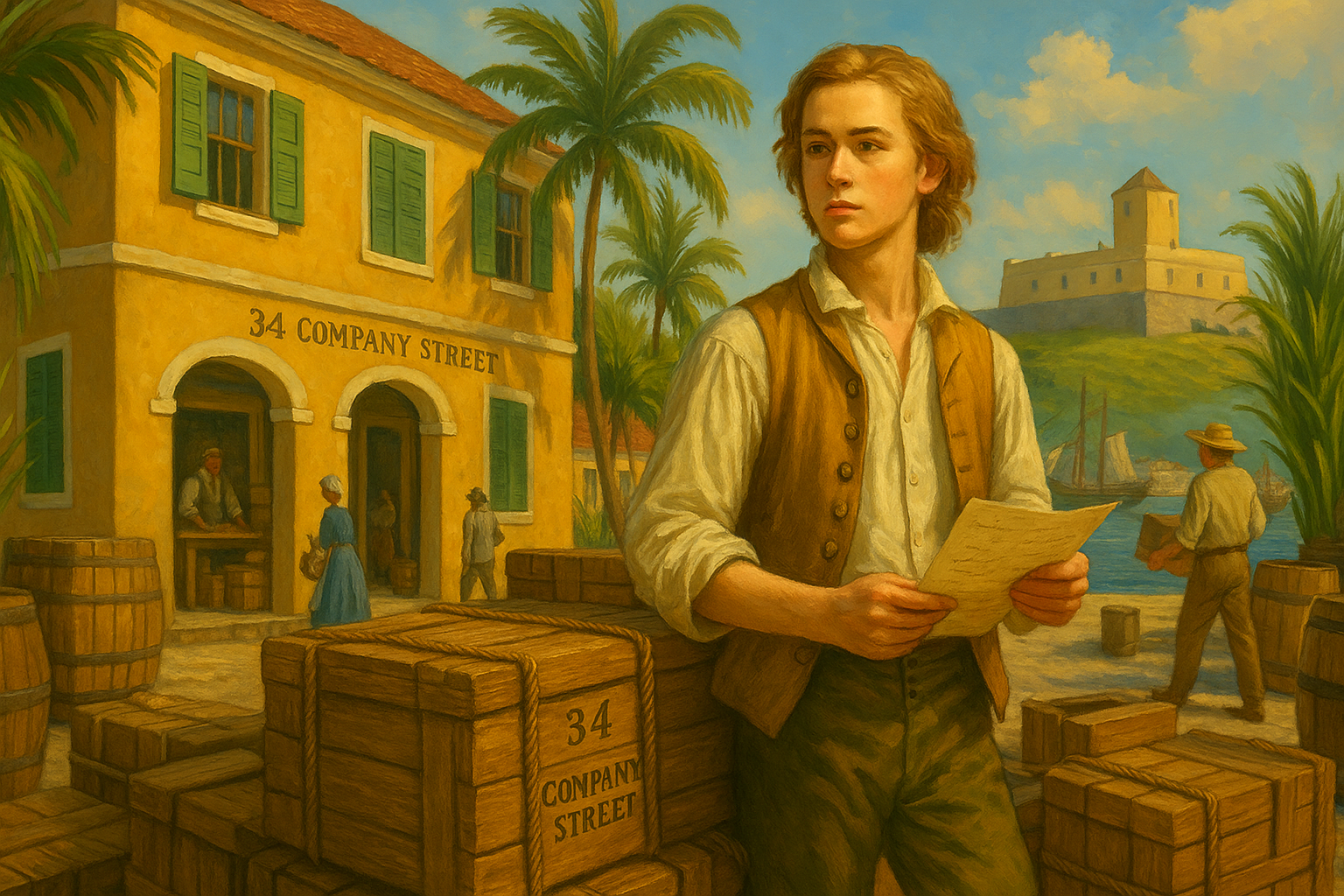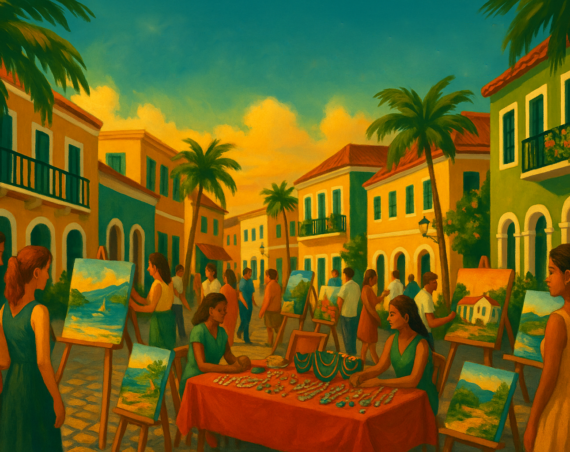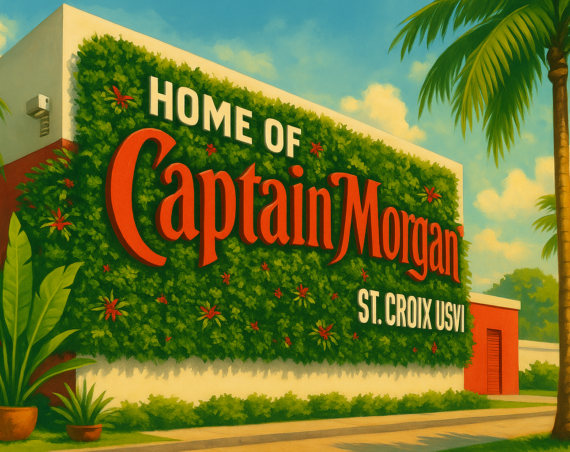Before he became a founding father, the first Secretary of the Treasury, or the face on the $10 bill, Alexander Hamilton was a boy of humble beginnings on the island of St. Croix. Though he left the island as a teenager and never returned, his experiences in Christiansted shaped the principles and skills he carried into the American Revolution and beyond. Retracing his early life here offers a deeper understanding of both Hamilton’s character and the colonial Caribbean world that helped form him.
The West Indian Roots of a Founding Father
Hamilton was born on January 11, 1755 (though some sources claim 1757) on the island of Nevis in the British West Indies. His mother, Rachel Faucette, had previously lived in St. Croix, where she was imprisoned in Fort Christiansvaern by her estranged husband, Johann Michael Lavien—a brutal episode that shaped her later life and indirectly, Hamilton’s own trajectory .
In 1765, Rachel returned to St. Croix with James Hamilton and their two sons, James Jr. and Alexander. Soon after, James Sr. abandoned the family, and Rachel supported her children by running a small store at 34 Company Street in Christiansted. Hamilton began clerking for the prominent import-export firm Beekman and Cruger at just 11 years old .
Education in Commerce—and Injustice
Hamilton’s early education came not from formal schooling, but from experience. Working in the bustling trading hub of Christiansted, he learned to manage shipping manifests, calculate complex conversions of currencies, and oversee inventories. He also bore witness to the brutal realities of the Caribbean slave trade, which left an indelible mark on his views of human rights and economics .
In 1768, tragedy struck when his mother died of illness. Orphaned and impoverished, Hamilton continued working and eventually moved in with the Stevens family, where he developed a lifelong friendship with Edward “Ned” Stevens. By 1771, his talents were undeniable. A powerful letter he wrote after a devastating hurricane was published in the Royal Danish American Gazette, catching the attention of Reverend Hugh Knox. Knox rallied the community to fund Hamilton’s education abroad .
Departure and Legacy
Hamilton departed St. Croix in 1773 to study in New Jersey. He would never return to the island, but the skills he honed there—literacy, finance, international trade, and political observation—proved invaluable. They laid the groundwork for his later role in shaping the American financial system, advocating for a strong federal government, and opposing slavery .
Timeline: Alexander Hamilton in St. Croix
- 1745 – Rachel Faucette marries Johann Lavien on St. Croix.
- 1755 – Alexander Hamilton is born on Nevis.
- 1765 – The Hamilton family moves to St. Croix.
- 1766 – Alexander becomes a clerk at Beekman and Cruger.
- 1768 – Rachel Faucette dies; Alexander is orphaned.
- 1772 – Hamilton’s hurricane letter is published.
- 1773 – Leaves St. Croix for New York and a new life .
Hamilton’s Footprints in Christiansted
While many original buildings no longer stand, visitors to Christiansted can still explore key sites such as:
- 34 Company Street – The location of the shop and home where Hamilton lived with his mother.
- Lots 7-8 King Street – Where Beekman and Cruger operated their business.
- Fort Christiansvaern – Where his mother was once imprisoned and where Hamilton likely drilled as part of the local militia.
These modest sites tell a powerful story of resilience, ambition, and transformation. Alexander Hamilton may have left St. Croix, but the island never left him.





